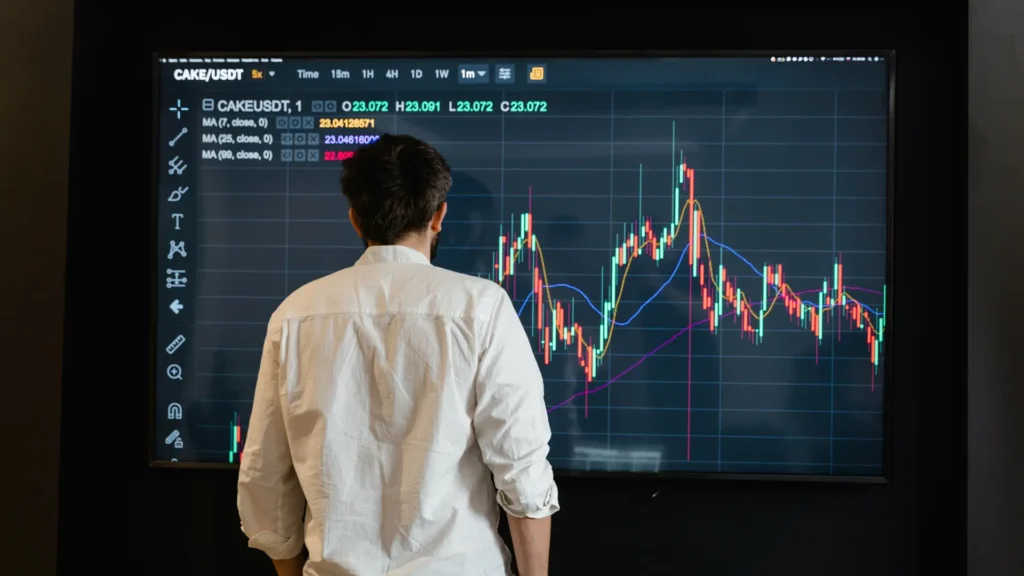Trading Mistakes: A Practical Analysis
Trading success relies on more than just strategy—it requires consistency, risk control, and psychological discipline. While many traders spend time refining indicators or optimizing entry signals, overlooked operational habits can quietly reduce profitability. Below is a breakdown of five key trading mistakes, analyzed from a technical standpoint, along with corrective protocols to strengthen your trading process.
1. Lack of a Defined Trading Plan is One of The Trading Mistakes
Error Profile:
Operating without a trading plan results in inconsistent decision-making. Without predefined criteria, entries and exits are reactionary, often driven by emotional impulse or market noise.
Technical Consequences:
- Inconsistent trade execution
- Undefined risk-reward ratio
- Lack of post-trade performance metrics
Corrective Action:
Establish a trading plan that includes:
- Entry/exit rules
- Position sizing formula
- Risk tolerance per trade (e.g., 1–2% of capital)
- Pre-market and post-market checklists
This turns your trading into a repeatable system rather than a series of guesses.


2. Overtrading Due to Perceived Opportunity Will Lead to Trading Mistakes
Error Profile:
Frequent trades taken without clear setups often stem from overconfidence, boredom, or the desire to “stay active.”
Technical Consequences:
- Elevated transaction costs
- Increased exposure to random market fluctuations
- Psychological fatigue leading to decision errors
Corrective Action:
Implement a trade filter based on strict technical or fundamental criteria. Use a trading journal to track overtrading tendencies. Incorporate cooldown periods (e.g., 15-minute breaks after two consecutive trades).
If your trade frequency increases while your win rate drops, re-evaluate your signal validity.
3. Emotion-Driven Trading Behavior
Error Profile:
Allowing emotional states (euphoria after wins, frustration after losses) to influence trade size or timing leads to inconsistent outcomes.
Technical Consequences:
- Position sizes fluctuate irrationally
- Increased drawdowns from revenge trading
- Breach of risk protocols under stress
Corrective Action:
Automate elements of your process. Use fixed position sizing and predefined stop levels. Incorporate rule-based triggers to avoid making trade decisions during heightened emotional states.
Logging emotional state before placing a trade can help isolate psychological biases from your system.


4. Insufficient Risk Management
Error Profile:
Traders often underestimate tail-risk scenarios and overallocate capital to high-conviction trades, neglecting capital preservation.
Technical Consequences:
- High drawdowns from single-trade failures
- Losses exceed expected risk models
- Inability to recover due to capital depletion
Corrective Action:
- Cap risk per trade (e.g., no more than 2%)
- Use stop-losses on every position
- Apply the Kelly Criterion or fixed fractional sizing models
- Avoid compounding losses by halting trading after a max drawdown limit
Diversification of strategies (not just assets) can also reduce risk concentration.
5. Chasing Late Entries (FOMO Trades)
Error Profile:
Entering a trade after the initial move is complete, usually triggered by news, momentum spikes, or seeing others profit.
Technical Consequences:
- Poor entry prices relative to risk
- Limited profit margin (bad reward-to-risk ratio)
- Increased slippage on market orders
Corrective Action:
Build watchlists and set alerts for setups before they trigger. If a move happens without your parameters being met, skip it.
Use backtesting to confirm that chasing has negative expectancy over time. This will reinforce discipline in respecting your entry criteria.


Conclusion: Mitigating Structural Weaknesses in Trading
Mistakes in trading are often procedural rather than strategic. Improving outcomes is less about discovering the next indicator and more about eliminating inefficiencies in execution, risk control, and behavior.
Each of these five mistakes stems from a breakdown in structure or discipline. By treating your trading like a business—with rules, systems, and ongoing review—you gain an edge not by predicting the market better, but by managing your process with precision.
Implement small, trackable improvements—and your P&L will start reflecting them.
Relevant Link : 5 Trading Mistakes vs. Smarter Moves That Could Save Your Profits



